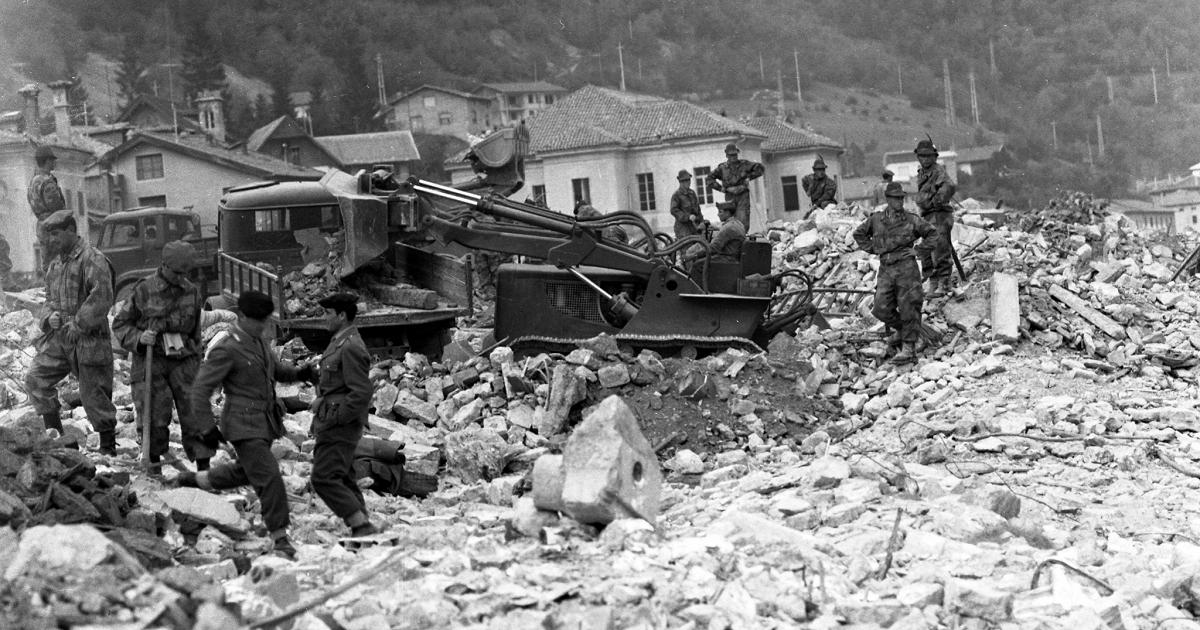The tragedy of Casamicciola, with the umpteenth landslide that has sown death and destruction, is only the latest in a
long series of events that have caused hundreds of deaths in Italy in the last 70 years
.
Earthquakes, floods, whirlwinds and water storms, hydrogeological phenomena which on many occasions have brought entire cities and portions of the territory to their knees.
Phenomena caused by
climate change
, but also by
illegal building and overbuilding
, which have made a large portion of the country even more fragile.
In Campania in 2022 there were 18 extreme weather events
, 6 in November alone.
They are the ones that, according to Legambiente, have affected Campania this year.
Since 2010, the extreme phenomena monitored in the Campania region have risen to 100
, of which 38 cases of flooding and floods and 4 landslides caused by heavy rainfall, such as the one that hit Casamicciola in Ischia.
For Legambiente
, the numbers on illegal building are also "worrisome"
: on the island of the Campania archipelago there are about 600 illegal houses affected by a definitive demolition order.
On the other hand, the number of
amnesty practices reaches 27,000
presented on the occasion of the three national laws (from 1985 to 2003): of these there are 8,530 instances in the technical offices of Forio, 3,506 in Casamicciola and 1,910 in Lacco Ameno.
And after the Genoa Decree of 2018, the number of damaged buildings that have applied for regularization is currently around 1,000.
The only public work that really serves the country, according to Legambiente, is the "
making the territory safe
".
The association therefore launches an appeal to the Government to ask for three commitments and concrete actions: a national climate adaptation plan;
a law against soil consumption;
and the establishment of a national control room for the mitigation of hydrogeological risk.
Italy, one of the most delicate countries in the world from a hydrogeological point of view, is increasingly overwhelmed by extreme events in an area battered by legal and illegal overbuilding and needs concrete interventions".
Stefano Ciafani, national president of Legambiente
Every tragedy risks always being the penultimate one, as
the history of the last 70 years of catastrophes, earthquakes, landslides and floods
illustrates .
The first post-war tragedy caused by nature was that of
Polesine
in 1951 where 101 people died.
This was followed by the massacre in the
village of Molina, in the Salerno area
, where 325 people lost their lives in 1954, and the
flood in Florence
in 1966, where dozens of deaths were counted.
On 9 October 1963, a landslide detached from the mountain and fell into the basin causing a wave that overtook the
Vajont
dam and destroyed the town of Longarone causing 2000 victims.
In November 1980 an earthquake in
Irpinia
causes 2914 victims.
In 1987, in the middle of July, there were 23 deaths from a flood in Valtellina.
In the 90s in
Sarno
one of the most dramatic disasters: on 5 May 1998 entire neighborhoods were obliterated by tons of mud, a black tide that overwhelmed houses and people descending from the mountain under the action of the rain.
161 died.
On 9 September 2000, after three consecutive days of rain in Calabria, the Le Giare campsite in
Soverato
suddenly turned into a flood that overwhelmed everything, causing 13 deaths.
On 1 October 2009, hydrogeological instability and heavy rains caused gigantic debris flows in the province of Messina which overwhelmed homes and motorists among
Giampilieri Superiore and Scaletta Zanclea
, causing 28 deaths.
On the night of April 6, 2009, a violent earthquake destroyed L'Aquila, causing 309 deaths.
In 2011 in
Genoa
, a city hit several times by floods, an exceptional rainfall in some districts to the east of the city in Val Bisagno caused 6 deaths.
One of the worst floods in the history of Liguria hit the Cinque Terre on 25 October 2011.
Vernazza
was invaded by a river of mud and very serious damage was also recorded in
Monterosso
.
There are 13 victims.
In
Senigallia
, hit last September by a flood that caused 12 victims, also in 2014 it was brought to its knees by the water, there were 4 deaths.
On 24 August 2016, another tragic earthquake in central Italy: in all, over three hundred people lost their lives and Amatrice was the most affected centre.
On 18 January 2017, a gigantic avalanche detached from the slopes of the Gran Sasso and hit the
Rigopiano
hotel : 29 victims.
On 10 September 2017 in
Livorno
the violent rains caused 8 deaths.
In 2018, two tragedies a few months apart caused a total of 23 deaths in
Forra del Raganello
, in the province of Cosenza, and in
Casteldaccia
, in the province of
Palermo
.
Even the last few months have been characterized by extreme events, also caused by drought and the almost total absence of rainfall.
On 3 July, a huge serac detached from the
Marmolada
, in the Dolomites on the border between Trentino and Veneto, killing 11.

